Have you ever heard of the Fenrir tattoo? This tattoo design is becoming increasingly popular among tattoo enthusiasts, and for a good reason – it has deep symbolism and a rich history. In this article with Impeccable Nest, we will explore everything you need to know about the Fenrir tattoo meaning, including its origins and interpretation.
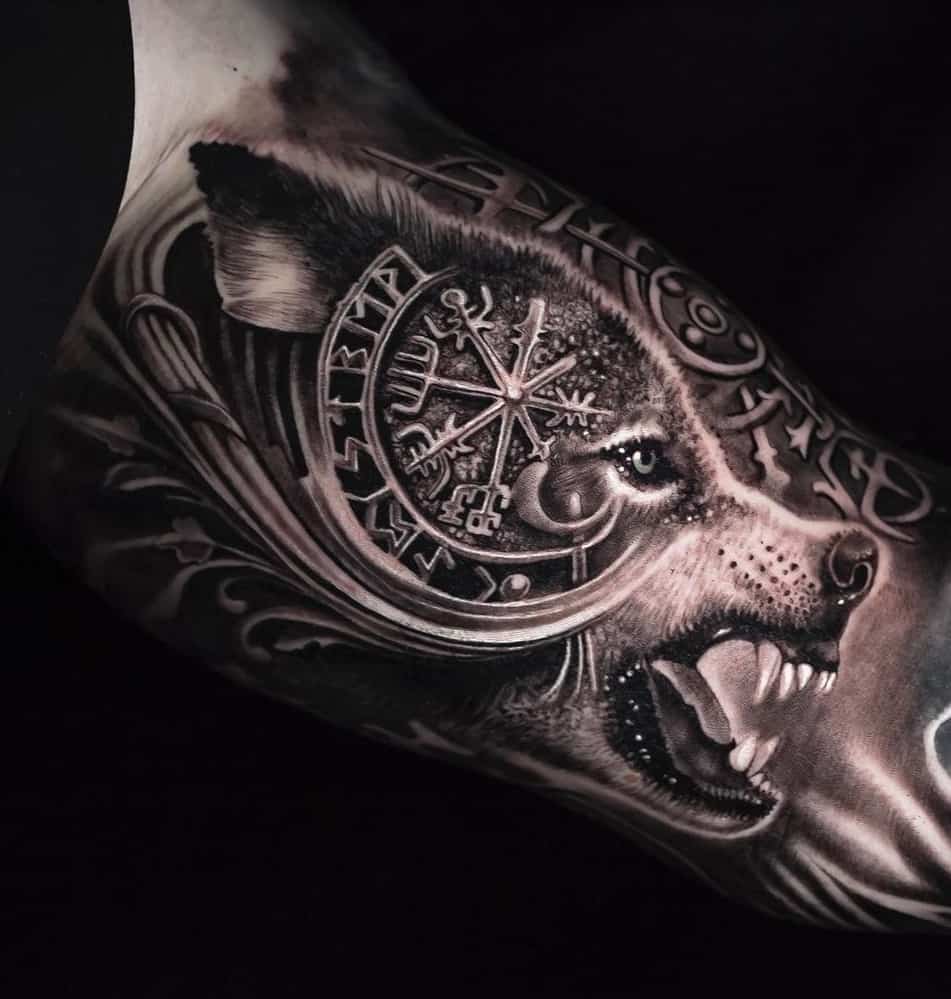
What is the Fenrir tattoo?
The Fenrir tattoo is a popular tattoo design that draws inspiration from Norse mythology. It features Fenrir, a monstrous wolf who plays a significant role in the mythology as he is prophesied to kill Odin, the king of the gods, during Ragnarok – an apocalyptic event that marks the end of the world.
In Norse mythology, Fenrir is the son of Loki and the giantess Angrboda. He was feared by the gods due to his immense strength and uncontrollable nature. To prevent him from causing havoc, the gods attempted to bind him with chains, but none were strong enough to hold him. Eventually, they enlisted the help of the dwarves to create a magical chain called Gleipnir, which was made of impossible materials such as the sound of a cat’s footsteps, the roots of a mountain, and the beard of a woman. When Fenrir was asked to try on the chain, he sensed treachery and refused unless one of the gods would put their hand in his mouth as a pledge of good faith. Only Tyr, the god of war, was willing to do so, and when Fenrir realized that he had been tricked, he bit off Tyr’s hand. Fenrir was then bound with Gleipnir and was left to wait until Ragnarok, when he would break free and fulfill his destiny.
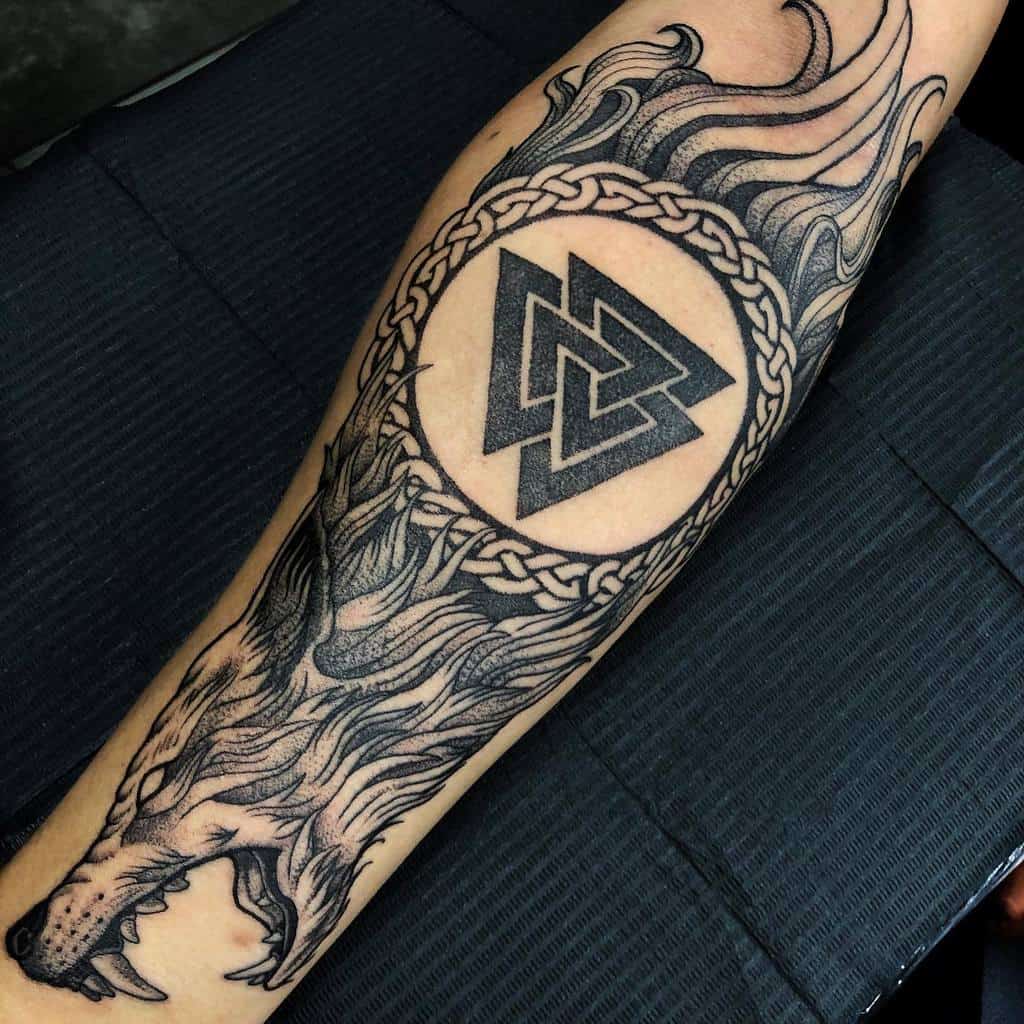
As a tattoo design, the Fenrir tattoo can vary widely in style and size, depending on the preferences of the individual. Some people choose to get a small and minimalist Fenrir tattoo, featuring just the outline of the wolf or a simple symbol. Others prefer a highly detailed full back piece that depicts Fenrir in all his ferocious glory, surrounded by other elements from Norse mythology such as runes, axes, and helmets.
The Fenrir tattoo is often chosen by those who identify with the qualities associated with the wolf in Norse mythology, such as strength, loyalty, and independence. It is also popular among those who appreciate the intricate designs and symbolism of Norse mythology and wish to pay homage to it through their body art.
In conclusion, the Fenrir tattoo is a powerful and visually striking tattoo design that draws inspiration from Norse mythology. Whether you choose a minimalist design or a full back piece, this tattoo can be a meaningful way to express your connection to the strength and ferocity of Fenrir and the rich cultural heritage of Norse mythology.
Meaning of the Fenrir tattoo
The Fenrir tattoo has several symbolic meanings that have made it an attractive design for many people. Some of these include:
Strength and Power
Fenrir tattoo is a popular choice among people who wish to display their strength and power. Fenrir is a prominent figure in Norse mythology, known for his immense physical strength and power, making him an ideal symbol of strength. The tattoo design typically features the image of Fenrir, often depicted as a large wolf with sharp teeth and fierce eyes.
The Fenrir tattoo can have multiple meanings and interpretations, depending on the individual wearing it. For some, it represents their physical strength and endurance, particularly those who engage in physically demanding activities such as sports or weightlifting. Others may choose the Fenrir tattoo to symbolize their mental strength and resilience, highlighting their ability to overcome challenges and adversity.
In addition to its symbolic value, the Fenrir tattoo also holds significant cultural and historical importance. Norse mythology has been a source of inspiration and fascination for many individuals over the years, and the Fenrir tattoo is a way to pay homage to this rich heritage. It can also serve as a reminder of one’s roots and cultural identity, particularly for those with Scandinavian ancestry.
When getting a Fenrir tattoo, it is essential to work with a skilled and experienced tattoo artist. The design requires a steady hand and attention to detail, particularly when it comes to capturing the intricate details of Fenrir’s appearance. A good artist will be able to provide guidance on placement, size, and color selection, ensuring that the tattoo complements and enhances the wearer’s unique style and personality.
In conclusion, the Fenrir tattoo is a powerful symbol of strength and power, making it an excellent choice for individuals looking to showcase their physical or mental fortitude. Its cultural and historical significance adds another layer of meaning, making it a meaningful and thought-provoking tattoo design.
Fearlessness
Fenrir was a monstrous wolf in Norse mythology, son of the trickster god Loki and giantess Angrboða. He was prophesied to kill Odin, the chief of the gods, during the events of Ragnarok, the end of the world. Fenrir’s fearlessness was a prominent trait that made him a formidable opponent and a symbol of strength and power.
Fenrir tattoo is a popular choice for individuals who want to convey courage and bravery. The tattoo can be depicted in various ways, ranging from a realistic portrayal of the wolf to a stylized or abstract design. The placement of the tattoo can also vary, with common areas being the chest, back, arm, and leg.
The Fenrir tattoo not only represents physical courage but also mental and emotional fortitude. It serves as a reminder to face challenges head-on, without fear or hesitation. The tattoo can be a source of empowerment and inspiration during difficult times, encouraging the wearer to tap into their inner strength and overcome obstacles.
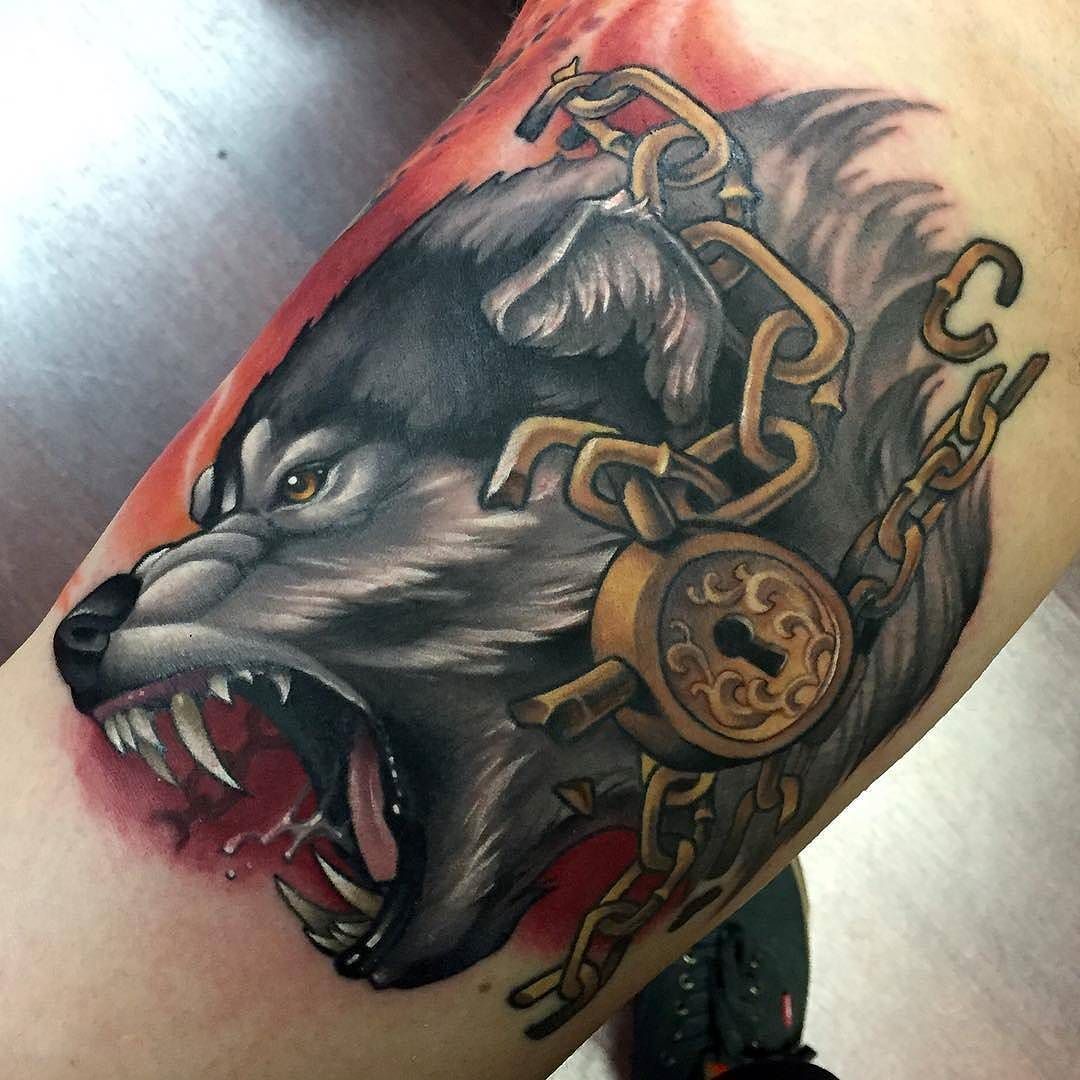
Furthermore, the Fenrir tattoo can also symbolize loyalty and protection. In Norse mythology, Fenrir was bound by the gods, which led to his eventual escape and involvement in Ragnarok. This story highlights the importance of caution and vigilance, as well as the consequences of unchecked power.
In conclusion, the Fenrir tattoo is an excellent choice for those seeking to embody the qualities of courage, bravery, and strength. Its rich history and mythology provide a depth of meaning and symbolism that can resonate with the wearer on a personal level. Whether as a standalone design or incorporated into a larger piece, the Fenrir tattoo is a powerful and timeless representation of fearlessness and resilience.
Loyalty
Despite his fearsome reputation, Fenrir was also known for his fierce loyalty to his family and clan. This loyalty is exemplified in the story of how he was bound by the gods. The gods were afraid of Fenrir’s power and feared that he would fulfill the prophecy of Ragnarok, so they attempted to bind him with various chains. Fenrir broke free of each chain until the dwarves forged a magical chain called Gleipnir. The chain was thin and delicate, but it was incredibly strong, and Fenrir could not break free from it.
The story of Fenrir’s loyalty resonates with many people today, particularly those who value loyalty as a virtue. As a result, Fenrir tattoos have become a popular choice among those who want to display their own loyalty to their family or clan. The tattoo typically depicts Fenrir in his monstrous form, with teeth bared and ready to defend those he cares about. Some versions of the tattoo also include Norse runes or other symbols to further emphasize the connection to Norse mythology.
Overall, the Fenrir tattoo has become a symbol of loyalty and strength, representing the powerful bond between an individual and their family or clan. Those who choose to get this tattoo are making a statement about their own values and beliefs, and honoring the legacy of one of the most iconic figures in Norse mythology.
Rebellion
The Fenrir tattoo, depicting the monstrous wolf from Norse mythology, has become a popular symbol for rebellion against authority. In Norse mythology, Fenrir was bound by the gods, as they feared his power and potential to cause destruction. This story has been interpreted as an allegory for the dangers of unchecked power and the fear that those in authority have towards those who challenge their control.
By choosing to get a Fenrir tattoo, individuals are expressing their opposition to oppressive structures and their desire to break free from societal norms. The tattoo is also a nod to the idea of embracing one’s wild side and rejecting the constraints of conformity. It can be seen as a way to reclaim personal agency and assert one’s independence.
The popularity of the Fenrir tattoo among those who identify as rebels or non-conformists is not surprising. In many cultures, tattoos have been used as a form of rebellion against societal norms. For example, in Japan during the Edo period, tattoos were associated with criminal organizations and were banned by the government. Despite this, some people continued to get tattoos as a way of expressing their independence and defiance.
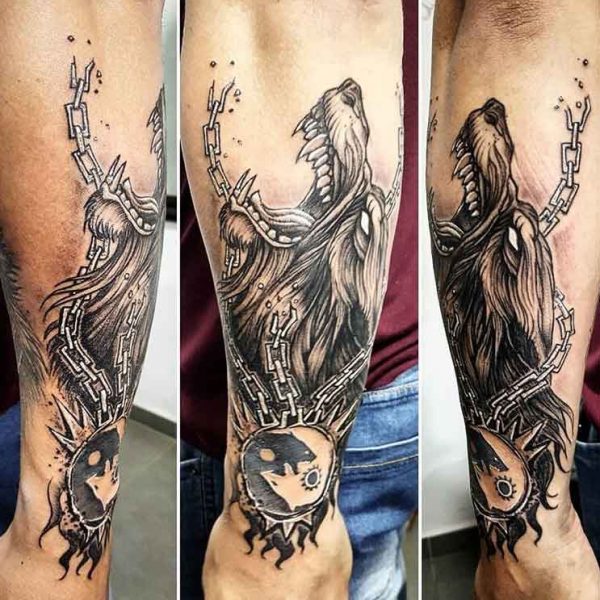
In contemporary Western societies, tattoos have become more mainstream, but they still carry a certain cultural weight. Depending on the context, tattoos can be seen as edgy, cool, or even taboo. For those who want to push back against authority and express their individuality, a Fenrir tattoo can serve as a powerful statement.
Of course, it’s worth noting that getting a tattoo is a deeply personal decision, and there are many reasons why someone might choose to get a Fenrir tattoo beyond a desire to rebel. Some may be drawn to the mythological significance of the creature, while others may simply appreciate the aesthetics of the design. However, for those who do see the Fenrir tattoo as a symbol of rebellion, it can be a potent way to assert their identity and push back against societal expectations.
Interpretation of the Fenrir tattoo
The interpretation of the Fenrir tattoo can vary depending on the individual’s personal beliefs and values. Some people may choose to get the tattoo to commemorate their Scandinavian heritage, while others may simply appreciate the design’s symbolic meaning.
Regardless of the reason for getting the tattoo, the Fenrir design can be interpreted in various ways. For example:
- Protection: The Fenrir tattoo can serve as a talisman for protection against harm and evil.
- Transformation: Fenrir’s story also represents transformation – from a cute and cuddly puppy to a monstrous wolf with immense power. The tattoo can thus symbolize a person’s journey or transformation in life.
- Acceptance of Fate: Some individuals may get the Fenrir tattoo to represent accepting their destiny, even if it is not what they had hoped for.
Different styles of the Fenrir tattoo
As mentioned earlier, the Fenrir tattoo can come in various sizes and styles. Here are some of the most popular styles:
- Minimalist: A small, minimalist design that usually features just the wolf’s head or pawprint. This style is perfect for someone who wants a subtle tattoo.
- Realistic: A highly detailed design that looks like a painting or photograph. This style is perfect for someone who wants a realistic-looking tattoo.
- Watercolor: A colorful design that uses watercolor techniques to create a beautiful and unique tattoo.
- Tribal: A design that incorporates tribal elements, such as bold black lines and geometric shapes. This style is perfect for someone who wants a bold tattoo.
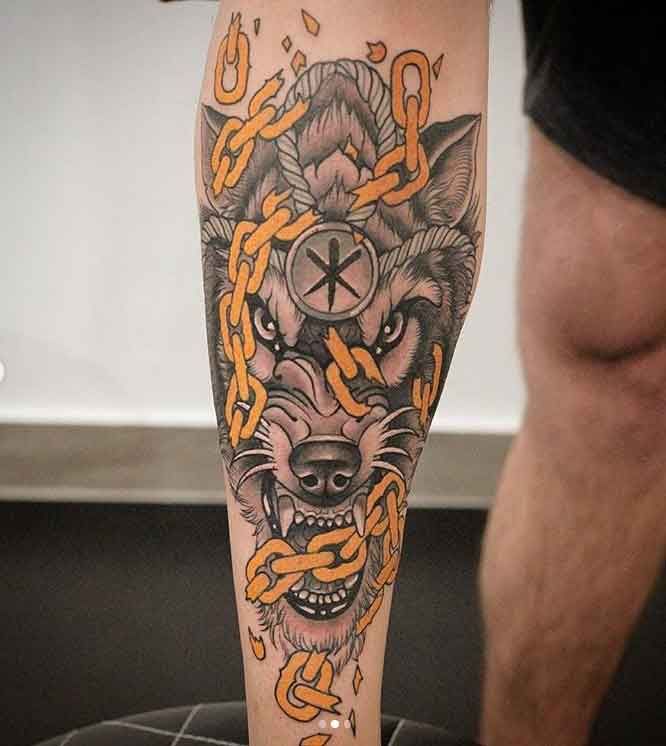
Placement of the Fenrir tattoo
The placement of the Fenrir tattoo can vary depending on the size and style of the design. Some popular placements include:
- Arm: The upper arm is a popular choice for the Fenrir tattoo, especially for those who want a larger or more detailed design.
- Back: The back is also a great choice for the Fenrir tattoo, especially if you want a full-back piece.
- Chest: The chest is a great option for those who want a smaller design or a more intimate tattoo.
Conclusion
The Fenrir tattoo is a beautiful and meaningful design that has deep roots in Norse mythology. Whether you choose to get it because of its symbolic meaning or simply because you like the design, it is a tattoo that is sure to turn heads. With various styles and placements available, the Fenrir tattoo is truly a versatile design that can be customized to suit your preferences.

I am Harvey Berry, a tattoo enthusiast who has immersed himself in the diverse world of ink, passionately exploring the beauty and artistry within each tattoo. My mission extends beyond uncovering the aesthetics of tattooing; it involves sharing in-depth knowledge across all aspects of this art form.
Fueled by genuine curiosity and love for every facet of tattooing, I have diligently crafted well-researched articles, with a special focus on the Tattoo Meaning of Impeccable Nest section. Here, my aim is to help the tattoo community gain a deeper understanding of the meanings and values embedded in each tattoo.
One of my primary goals is to encourage responsible decision-making when it comes to getting inked. I recognize that choosing to get a tattoo is a significant personal decision that requires careful consideration. Hence, I provide diverse resources covering the meaning of tattoos, the tattooing process, aftercare tips, and other valuable information.
Whether you are a seasoned tattoo enthusiast or embarking on your first exploration of the world of body art, I aspire to be a reliable resource for you at every step of your journey. I hope that my extensive knowledge of tattoos, especially in the Tattoo Meaning section, will assist you in finding inspiration to express yourself through the art of tattoos.
